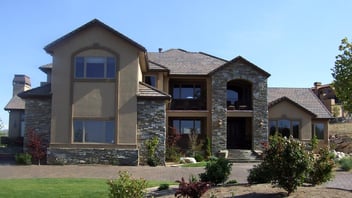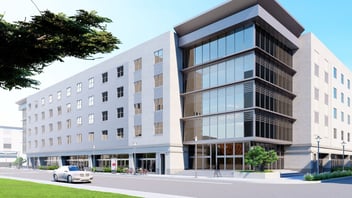What are "SIPs" and Which Are the "Best" SIPs?
Structural Insulated Panels (SIPs) are factory-fabricated panels that can be used as load bearing walls, floors, roofs, and decks for practically any building. They are typically made with a core of EPS (expanded polystyrene foam, aka "Styrofoam"TM) and with glue-applied skins on the 2 faces, often made of either OSB (oriented strand board) or MgO (Magnesium Oxide) sheets.
SIPs offer great time, labor, and money savings compared to conventional construction methods, as documented extensively by RS Means, the world’s most respected estimating company in their Time & Motion Study for BASF.
SIPs are precut in the shop to fit any design, with the dimensions of the panels precisely measured and fitted according to the building design, considering doors, windows, electrical chases, and other building elements. The panels are made in the factory and shipped to the jobsite to be easily assembled into walls, floors, roof, and other building “shell” components, as well as decks and shading devices. Assembling SIPs on a jobsite is like Legos for adults.
a427.jpg)
When used as the building’s external shell, the building gets a continuous blanket of insulation all the way around the structure, making an air tight and energy efficient building with minimal thermal bridging. Like a Thermos bottle, the continuous insulation blanket all around helps to keep the construction warmer during the winter and cooler during the summer. Proper ventilation equipment is required, but often furnaces and air conditioning equipment can be eliminated.
All SIPs provide:
- Up to 55% faster building completion (made of prefabricated units- see page 26 of the Means Study)
- Up to 41% reduced labor time/wages (very few pieces to easily assemble- see page 19 of the Means Study),
- Superior thermal and acoustics performance (Continuous insulation and with more dense skins than drywall),
- More energy efficiency (tight-fitting EPS reduces energy consumption = lower utility bills compared to sag-prone blanket insulation),
- Smaller heating and cooling equipment (minimal air leakage and thermal bridging = less power required),
Compared to OSB SIPs, MgO SIPs offer numerous benefits, including
- Unaffected by Water & Moist Air Vapor (MgO does not rot or delaminate)
- Prevents growth of mold and mildew (the MgO board is a natural fungicide), and
- Very fire resistant (MgO is noncombustible).
- Made of inert materials that do not attract termites, rodents, and other pests.
- Do not require the addition of gypsum board to achieve fire-resistance ratings or for interior finishes.
SIPs are versatile in design, and can be easily used in any building style, in any building type, and for any building use. SIPs are especially appropriate where repetitive walls, floors, and roofs occur, such as in apartments, condos, schools, hotels, offices, and hospitals.
SIPs offer a reduced “carbon footprint” by lowering both the number of materials to be used in creating the building and by lowering the energy consumption. SOPs also use renewable and recyclable materials, reducing the environmental impact of construction.
While there is no single building system that is best for all situations, SIPs are highly efficient, versatile, and sustainable building materials that offer numerous advantages in most building projects. MgO SIPS, with their superior resistance to fire, water, mold, and insects, offer a more complete and beneficial building system with fewer potential problems and complications. Simplus Building System’s Panels give us the best of both MgO SIPs and Passive House sciences. With the two most efficient and effective ways of building brought together, the advantages over conventional construction are undeniably huge. To choose otherwise is choosing wasteful mediocrity and continuing the bad practices of the past.
Learn more about our MgO SIPs.
Join the conversation and give us your thoughts in the comments section below.



